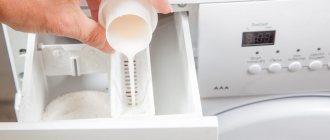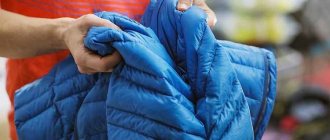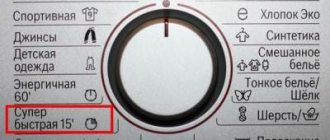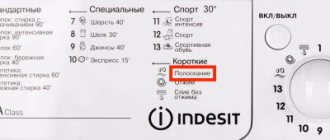Cotton fabrics do not give up their positions even in the era of various artificial materials. This is not surprising, because cotton clothing, bedding and underwear cannot be compared with other fabrics in terms of comfort. The fabrics absorb moisture well, dry easily, and are comfortable in hot and cold weather. Cellulose fiber is long, twisted and hollow inside; it is its structure that explains the characteristics of the fabric.
The fiber is resistant to light and humidity, but is destroyed in acid. An alkaline environment, on the contrary, increases the strength of the fiber, making it denser and smoother. It’s not difficult to figure out whether cotton shrinks after washing and how to wash cotton items to avoid shrinkage. The properties of the fiber will tell you how to handle your favorite things.
Cotton fabrics differ in thread thickness, weave density and purpose. You can wash 100% cotton the same way as mixed cotton only if the additional fibers have similar characteristics.
You need to pay attention to the care information on the label and the ingredients. For example, fabrics containing lycra are not washed at high temperatures, which would destroy the elastic fibers.
Remove stains and remove yellowness
After frequent washing of cotton items, you may find that the clothes turn gray or become covered with yellow spots. It is not recommended to use substances with bleach to solve this problem, so as not to damage the fabric even more. There are a lot of folk recipes that will help get rid of such stains:
- Combine peroxide, ammonia and water in the following proportions: 30 ml – 15 ml – 10 l.
- Heat the water to 60 degrees, pour in the remaining ingredients.
- Stir. Place the items in a container of water for about half an hour.
- Rinse thoroughly.
- Organize drying in a well-ventilated area.
With this washing method it is easy to achieve a snow-white color and remove even old stains. If you want to wash cotton without shrinking, remember this method as it is 100% effective. After placing a “difficult” stain - coffee, chocolate, wine or berry juice, use soap or dishwashing detergent. Then boil with bleach. Wait for the water to boil, then turn the heat down and simmer for 30 minutes.
Drying
- Dry items flat to make ironing easier.
- It is better to hang it on hangers in the shade. Avoid exposure to direct sunlight, as white fabrics may acquire a yellowish tint and bright ones may fade.
- Automatic drying is allowed, but if the product is completely cotton, it is not recommended to prevent the cotton from shrinking.
- Cotton dries quite quickly, it is very important not to overdry it, but to iron it in a slightly damp state.
- If the laundry has completely dried, you can spray it with a spray bottle or iron it through damp gauze.
Hand washing cotton
Not sure how to hand wash cotton? Let's consider all the nuances of such washing. Thin, lace and embroidered clothes are most often washed by hand. In such cases, soaking is not required. When hand washing, use gentle detergents that do not contain chlorine or other aggressive substances. When washing, you need to rub the fabric very carefully, without applying much force, so as not to damage the fabric. Do not twist the clothes - squeeze them lightly to remove as much water as possible. Rinsing is recommended in water at a temperature of 37-40 degrees. Rinse until the soap suds are removed.
How to choose a detergent
The fabric of the curtains is light, so the amount of detergent is reduced by 2 times. When washing in a machine, run the rinse program 2 times to completely remove chemical residues.
Detergents by fabric type
To wash expensive curtains, purchase modern curtain detergents with reduced foaming that do not contain phosphates.
Suitable for products made of organza, cotton, nylon.
Silk balm
Silk tulle cannot be washed with regular powder. Enzymes and alkalis affect the structure of the fibers. For delicate fabrics, liquid products that are marked for silk and wool are suitable.
Popular choice
Experienced housewives choose the most reliable washing powders and gels.
"Cashmere Elixir" for tulle and curtains
Powder for delicate fabrics (artificial, natural) removes traces of soot, soot, nicotine, and fat. Contains silicones. They prevent wrinkles from forming. The powder is intended for all types of washing, white and colored curtains.
Clovin Clever gardinen
Hand wash white curtains made of any fabric. The powder removes grease stains, traces of soot, soot, eliminates unpleasant odors, and restores whiteness.
Removing Tough Stains
If you don’t know how to wash cotton when it’s heavily soiled, it’s simple. This requires pre-soaking. Fill a basin with warm water, add laundry detergent or gel, and soak the clothes for a couple of hours before putting them in the washing drum. There is another way to easily remove stains and dirt. Soak the item in water and rub the stains with 72% laundry soap. Rub gently and thoroughly. After removing the stains, you can begin regular washing. If your washing machine has a soak or pre-wash function, use it for the same purposes.
Important! Skip the vinegar. Do not soak things in questionable solutions so that the clothes do not lose color and shape.
When you need to remove stains from white cotton clothes, use products with bleach or a non-chlorine stain remover.
Types of cotton fabrics
There is a huge variety of cotton fabrics on sale. Minimal knowledge about its types will help you make sure you don’t make a mistake with the quality of the purchased material.
Organic
Organic cotton is an environmentally friendly material produced without the use of chemicals. To grow cotton, no pesticides or insecticides are used, but only natural fertilizers - manure and compost. The collection of fibers is carried out manually, since only a person is able to determine the degree of maturity of the fibers. Organic fiber production accounts for only 1% of the world's cotton turnover. It is labeled as “organic cotton” and is suitable for sewing clothes for newborns and allergy sufferers.
Mercerized
If you see a “mercerized” mark on a product, it means that the material was additionally treated with a special compound to improve its quality characteristics. In the case of cotton, the fibers are treated with caustic soda, which increases the strength and wear resistance of the material. Typically, mercerized cotton is used to create yarn or in the textile industry for making home linen.
Cotton jersey
Originally produced only from wool, jersey fabric began to be improved over time by adding other fibers to the composition. Cotton, which is part of the fabrics, gives the material appropriate properties, such as shape retention, lightness, and matteness.
Mixed
At the moment, blended cotton is considered the most wear-resistant, which has made it popular in the production of workwear. The material is a mixture of synthetic polyester fibers and cotton itself. The material is characterized by maximum strength and durability, retains color well, does not conduct static electricity, and can withstand extremely high and low temperatures. In addition to workwear, jackets and raincoats, camping equipment, awnings and tents are made from cotton blends.
Pima
Pima cotton is considered the softest in the world because it is made from the longest cotton fibers grown in Peru and the United States. It has maximum strength and softness, due to the special weave of fibers, as well as unique adsorbing properties. Due to its high absorbency, it is easy to leave a stain on this fabric.
Interlock
The material consists of 100% cotton fibers woven using a special knitting technique with two needles. The result is a double knitted fabric, smooth on both sides. The material is very soft and pleasant to the body, which is why it is widely used in the creation of children's clothing, dressing gowns and pajamas. There are 3 types of interlock: singing, ring and open. Each of them is processed by various surface grinding methods and has properties such as wear resistance, thermal insulation and breathability.
Ranfors
Ranfors cotton came to us from Turkey, since initially it was produced only by the company of the same name. The peculiarity of the creation of the material is increased cleaning and processing of fibers, as well as a special diagonal weaving technique, distinguishable from standard plaid. As a result, the fabric becomes more durable and dense, is less subject to deformation and does not shrink. The high density of the fabric allows you to dye products in a variety of colors and apply bright designs. Most often, bed linen is made from this material.
Percale
Percale is a standard cotton fabric produced by twisting the fibers in a characteristic way before weaving. During the production process, the canvas is also impregnated with a special composition, thanks to which the material becomes especially durable. At the same time, the canvases do not lose their softness and lightness. Thanks to its declared properties, percale becomes an excellent raw material for sewing bed and underwear, blouses and shirts.
Batiste
Lawn fabric comes in several types, but the most expensive are those hand-twisted from natural cotton. The material is very light and airy, allows air to pass through well, does not cause skin reactions, is soft, but at the same time holds its shape well and does not deform. Cotton-based cambric is mainly used for sewing clothes, both everyday and festive, as well as for making home textiles.
Cotton gas
Gas materials are particularly airy and light. In the production of fabric, the thinnest, almost transparent threads are used. In addition, the material is unique due to its special weave of fibers that do not adhere to each other. Due to the air space between the threads, the unique lightness of the material is achieved. The fabric is mainly used to make light summer clothes.
Grebennoy
Combed cotton is a special type of yarn produced by twisting cotton fibers that have not been combed. The yarn turns out fluffy and soft. Products made from combed yarn have a matte finish, absorb moisture well and allow air to pass through.
Cotton voile
Delicate and flowing fabric, which belongs to the elite category. It is created using a plain weave of fibers and is somewhat reminiscent of gauze. On sale you can find plain-dyed, bleached or printed veils. Canvases painted with transitional colors look original. Voile cotton is mainly used for making wedding and evening dresses or accessories, as well as home decor items.
Mako cotton
Expensive material produced in Egypt. It has unique softness and a unique noble shine. The material is mainly used to produce high quality underwear.
Peach cotton
A special type of cotton fabric with a soft velvety surface, which is achieved by treating the surface of the finished fabric with a special brush.
Cotton BIO-WASH
A material that is pleasant to the body, the softness of which is achieved through treatment with natural biologically active, rather than chemical, substances. The result is a fabric that is soft and pleasant to the skin and does not cause allergic reactions.
Optimal washing temperature
Haven't decided at what temperature to wash cotton? Then we will tell you the details. Colored items tend to stain when exposed to water, and the higher the temperature, the greater the likelihood of color loss. Therefore, when washing a cotton colored dress, the optimal washing temperature is 40 degrees. When washing white clothes, a temperature of 90 degrees is suitable - this will not harm the color. But remember that frequent washing in almost boiling water will thin out the fibers of the fabric.
Recommendation! Choose the temperature for white cotton items based on the degree of soiling. To refresh your laundry, 40 degrees is enough. To remove the stain, you will need a higher temperature setting.
When choosing the automatic mode, pay attention to the fact that modern models of washing machines provide a “Cotton” program, which is suitable for washing cotton items.
Preparatory work
Washing cotton can be done either manually or in a washing machine; the temperature indicator will be important for this. To prevent shrinkage of items made from 100% cotton, it must be washed carefully.
Before washing cotton clothes, you need to do a little preparation, which looks like this:
- Cotton items must be sorted, whites must be washed separately from colored and dark ones. In addition, items with stains are placed in a separate pile. Before starting the main wash, stubborn stains of various origins are removed.
- Sorting is carried out according to the strength of the fabric; homespun, thick fabric is washed at higher temperatures; thin cotton will not withstand such stress.
- Items are separated according to the degree of contamination; heavily soiled items should not be placed in the same container with lightly soiled wardrobe items.
- Cotton shirts, jackets, and trousers should be washed inside out with buttons, zippers, and snaps fastened.
Before you start washing, carefully study the labels from the manufacturer, everything will be described there down to the smallest detail. The recommended washing temperature, the use of special products, and ironing rules will be indicated very precisely.
Additional Tips
To prevent clothes from shrinking, there are several ways to prevent this. So, the first option:
- Place the clothes in a bowl of warm water for half an hour.
- After: delicate mode and 30-degree temperature are what you need.
- Take out and carefully stretch the clothes with your hands to the required shape.
- Straighten the clothes from time to time until they are completely dry.
Option #2:
- Cover the product with wet gauze and iron it, slightly stretching the edges.
- Use the iron until the item is completely dry.
What does a full cycle consist of?
The sequential execution of the usual stages - washing, rinsing and wringing out things - constitutes a full cycle of operation of the machine. The device allows you to regulate the specifics of these operations.
Wash
The choice of washing mode is determined by the following parameters:
- fabric structure;
- the presence of decorative elements on products;
- contamination (you can include soaking, boiling cotton fabrics).
The right choice will determine not only how well things are washed, but also possible damage to the laundry from the aggressive effects of temperature and high speeds.
Rinsing
When rinsing, detergents are washed out of fabrics. Many people prefer to run an additional rinse mode to thoroughly wash the laundry from powder.











